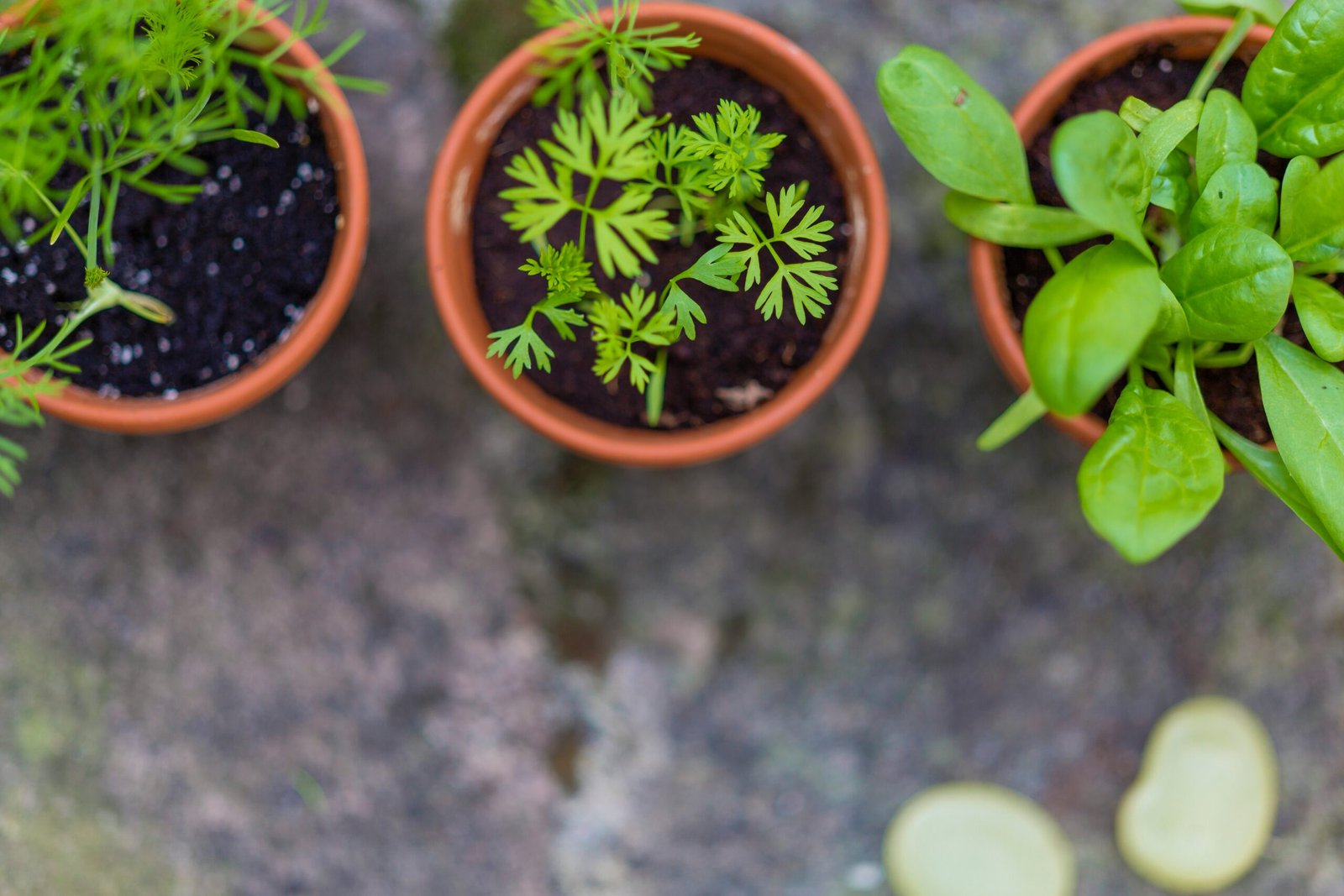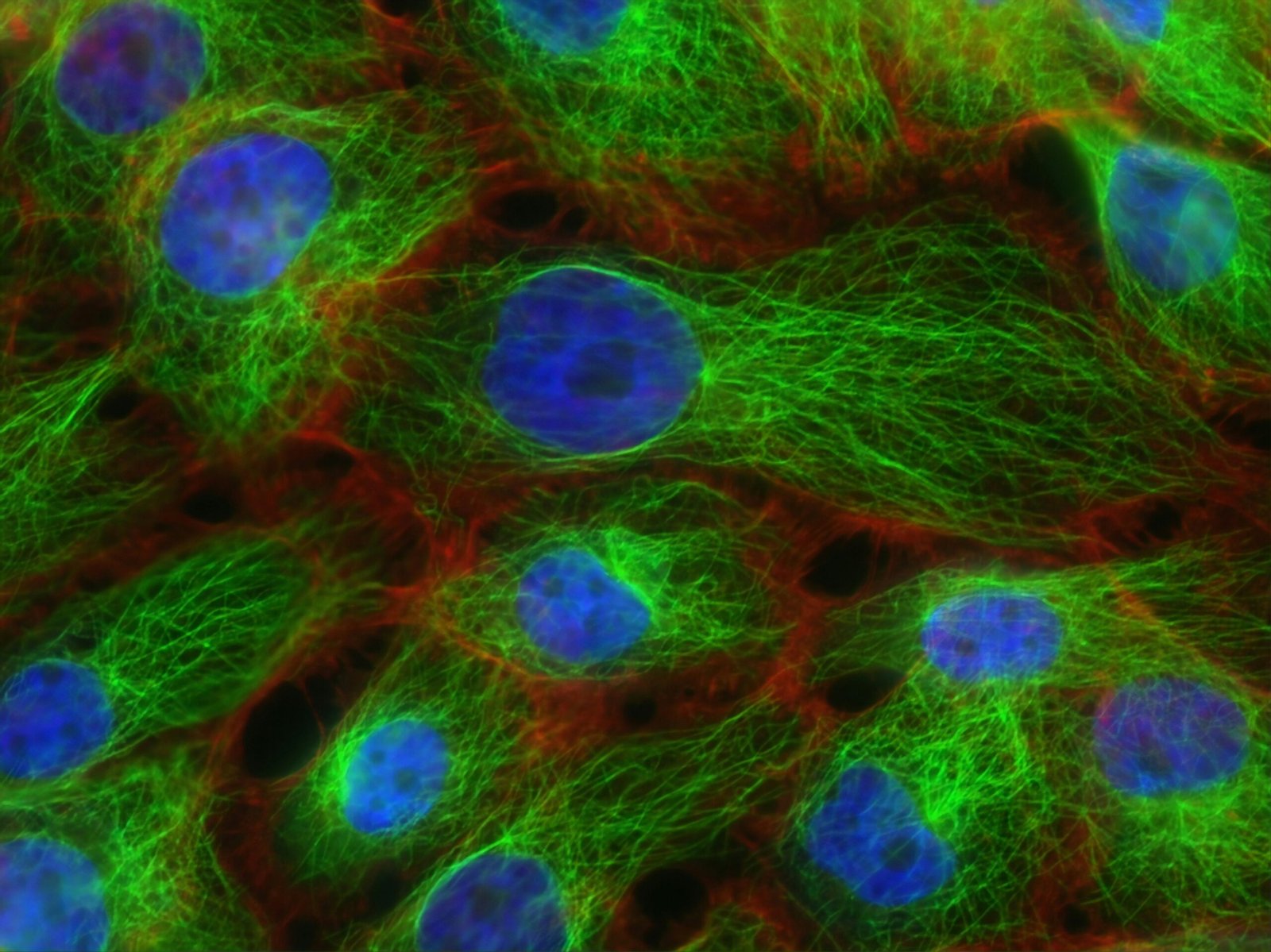“`html
Introduction to Plant Breeding
Plant breeding is a scientific method of improving the genetic composition of plants to achieve desired traits. At its core, plant breeding aims to enhance plant species to fulfill specific human needs, such as higher yields, improved disease resistance, and better climate adaptability. By manipulating the heredity of plants, breeders select and develop varieties that exhibit favorable characteristics, addressing both agricultural efficiency and environmental sustainability.
The primary objectives of plant breeding are multifaceted. First, increasing crop yield is a predominant goal, ensuring food security for a growing global population. Secondly, disease resistance is crucial; developing varieties that can withstand pathogens minimizes crop losses and reduces the reliance on chemical treatments. Thirdly, climate adaptability has gained prominence in recent decades, with plant breeders striving to cultivate varieties that can thrive under diverse and often unpredictable climatic conditions.
Historically, plant breeding practices date back to the dawn of agriculture when early farmers selected seeds from the best-performing plants for the next planting season. This selection process laid the foundation for modern plant breeding techniques. The discovery of Gregor Mendel’s laws of inheritance in the 19th century marked a significant turning point, providing scientific insight into how traits are passed from one generation to the next.
Over the years, advancements in genetics and biotechnology have vastly expanded the capabilities of plant breeders. Techniques such as hybridization, genetic modification, and genome editing have propelled plant breeding into a new era. Today, these sophisticated methods allow breeders to introduce specific, beneficial traits with greater precision and efficiency than ever before.
Overall, plant breeding has played a critical role in the development of horticulture, shaping the way we cultivate and utilize plants. By understanding its principles and objectives, we appreciate the complexity and importance of this field in advancing agricultural practices and addressing global challenges.
“`
The Necessity of Plant Breeding
Plant breeding is an indispensable component of modern agriculture and horticulture, aimed at addressing various challenges posed by a rapidly changing world. One of the primary drivers for the necessity of plant breeding is the rapidly growing global population. As the demand for food increases, there is a pressing need to develop high-yield plant varieties that can meet the nutritional requirements of this expanding population. Through meticulous selection and breeding practices, we can obtain crops that produce more food per unit area, thereby contributing significantly to food security.
In addition to feeding a growing population, plant breeding is crucial in mitigating the impacts of climate change. As weather patterns become more unpredictable and extreme, plants face new stresses such as drought, flooding, and extreme temperatures. By selectively breeding plants with desirable traits, such as drought tolerance and heat resistance, plant breeders can develop varieties that are more resilient and capable of thriving under adverse conditions. This adaptability ensures that agricultural productivity remains stable even in the face of climatic uncertainties.
Pests and diseases also pose significant threats to crop yields and quality. Traditional agricultural practices often rely on chemical inputs to combat these challenges, which can have detrimental environmental effects. However, through plant breeding, we can develop cultivars that exhibit natural resistance to specific pests and diseases. This not only reduces the need for chemical interventions but also promotes more sustainable and environmentally friendly farming practices.
Furthermore, plant breeding is instrumental in promoting sustainable agricultural practices. It plays a vital role in the development of crops that require fewer inputs such as water, fertilizers, and pesticides. By enhancing the efficiency of resource use, plant breeding helps in reducing the ecological footprint of agriculture. This aligns with the overarching goal of achieving long-term sustainability in food production systems.
Overall, the necessity of plant breeding in modern agriculture and horticulture cannot be overstated. From ensuring food security and combating climate change to promoting sustainable practices, plant breeding is at the heart of strategies aimed at creating a resilient and productive agricultural landscape.
Plant Evolution and Its Role in Breeding
The natural process of plant evolution plays a pivotal role in the field of plant breeding. Over millions of years, plants have undergone significant changes through natural selection, leading to the diverse species we see today. Understanding this process helps breeders harness genetic variation and adaptation to develop new plant varieties tailored to meet specific needs.
Natural selection is a key driver of evolution, where plants with advantageous traits are more likely to survive and reproduce. This process increases the prevalence of beneficial traits in a population over generations. Genetic variation, resulting from mutations, genetic recombination, and gene flow, provides the raw material for evolution. Varied genetic makeup within a species enhances the probability of some individuals possessing traits that confer a survival advantage in changing environments.
Adaptation, another critical component of evolution, involves changes in plant characteristics that improve survival and reproduction in specific environments. For example, plants in arid regions may develop deeper root systems to access water or waxy leaves to minimize water loss. Such adaptative traits are invaluable in plant breeding, allowing breeders to select for characteristics that improve plant resilience and productivity.
Breeders leverage their understanding of plant evolution to select desirable traits, creating new varieties that are more robust and beneficial. Traits such as drought tolerance, disease resistance, and enhanced nutritional content are often targeted in breeding programs. For instance, drought-tolerant crop varieties have been developed to thrive in water-scarce regions, ensuring food security in the face of climate change. Similarly, breeding for enhanced nutritional content has led to crops like biofortified rice and maize, which address nutritional deficiencies in many parts of the world.
By harnessing the principles of plant evolution, breeders can effectively guide the development of superior plant varieties. This approach not only optimizes agricultural productivity but also contributes to sustainability and food security. The intricate interplay between evolution and breeding underscores the importance of continuous research and innovation in horticulture.
Plant Breeding in Horticulture
Plant breeding in horticulture plays a pivotal role in the enhancement of fruits, vegetables, ornamental plants, and other horticultural crops. The primary objective of plant breeding within this sector is to improve various traits to meet both consumer and environmental demands. This involves meticulous selection and cross-breeding processes aimed at amplifying qualities such as aesthetic appeal, flavor, nutritional value, and growth habits. As such, specialized breeding programs are vital for achieving these objectives and ensuring that horticultural crops can thrive under diverse conditions.
In the context of fruits and vegetables, plant breeding focuses significantly on improving taste, texture, and nutritional content while ensuring higher yields and better resistance to pests and diseases. For instance, breeding programs have successfully developed tomato varieties with enhanced flavors, higher levels of antioxidants, and longer shelf lives. Similarly, the breeding of carrots has produced varieties rich in beta-carotene, contributing to better visual and immune health for consumers.
When it comes to ornamental plants, breeding efforts aim at enhancing visual attributes such as color vibrancy, petal structure, and plant form. Roses, for example, have seen tremendous improvements through breeding programs such as the creation of more vibrant colors and increased resistance to common diseases like powdery mildew. These enhancements make ornamental plants more appealing to consumers and beneficial for decorative and landscaping purposes.
Specialized breeding programs are also instrumental in adapting horticultural plants to various climatic conditions. A notable case study is the development of drought-resistant flower species like the marigold, which thrives in arid environments with minimal water requirements. This was achieved by selecting and cross-breeding drought-tolerant varieties over several generations, making these plants a sustainable choice for regions with water scarcity.
The impact of plant breeding in horticulture is thus multi-faceted, contributing to the overall improvement in quality and adaptability of horticultural crops. Such advancements not only cater to the aesthetic and nutritional demands of consumers but also address the challenges posed by pests, diseases, and changing environmental conditions.
Classical Plant Breeding Techniques
Classical plant breeding techniques have long been foundational in horticulture, providing a historical basis for the improvements and innovations witnessed in plant breeding today. This section delves into traditional methods such as selective breeding, hybridization, and backcrossing, each of which has been instrumental in advancing horticultural practices. Understanding these classical methods is essential as they highlight the successes and limitations that have shaped modern plant breeding.
Selective breeding, one of the oldest and most straightforward methods, involves choosing plants with desirable traits and breeding them over multiple generations. This approach has led to significant agricultural advancements, such as the enhancement of crop yields and resilience to environmental stressors. For example, the development of disease-resistant wheat varieties stems from painstaking selective breeding efforts.
Hybridization, on the other hand, refers to the cross-breeding of two genetically distinct plants to produce offspring with desirable traits from both parents. This method has been particularly effective in creating high-performing hybrid crops. One famous instance of hybridization success is the development of hybrid maize, which substantially increased corn yields and revolutionized agricultural productivity.
Backcrossing is another classical technique wherein a hybrid offspring is crossed back with one of its parents or a plant genetically similar to the parent. This method is primarily used to introduce traits from one parent while retaining most of the genetic makeup of the other. An example of successful backcrossing is seen in the breeding of tomato plants resistant to specific soil-borne diseases, thus ensuring healthier crops.
Despite their many advantages, classical plant breeding techniques also have limitations. These methods can be time-consuming and require many generations of plants to achieve significant improvements. Additionally, they often face challenges due to genetic complexities and environmental influences that affect plant traits.
Nonetheless, the principles and successes of classical plant breeding have laid the groundwork for more advanced techniques. Historical achievements, such as the Green Revolution which significantly boosted food production through improved crop varieties, showcase the undeniable impact of classical breeding methods in horticulture. These techniques continue to serve as a vital reference point for contemporary plant breeding innovations.
“`html
Modern Plant Breeding Techniques
Contemporary plant breeding techniques have revolutionized horticulture by offering greater precision, efficiency, and a broader range of possibilities compared to traditional methods. Among these modern techniques, genetic engineering, marker-assisted selection, and genome editing stand out as pivotal innovations.
Genetic engineering involves the direct manipulation of an organism’s DNA to introduce or modify specific traits. Unlike traditional crossbreeding, which relies on the natural combination of genes, genetic engineering allows for the targeted addition of new traits, such as pest resistance or enhanced nutritional content, from disparate species. This method significantly reduces the time required to introduce desirable traits and opens up opportunities for developing novel plant varieties.
Marker-assisted selection (MAS) represents a bridge between traditional breeding and genetic engineering. This technique uses molecular markers—segments of DNA associated with specific traits—to screen and select plants that carry the desired characteristics early in the breeding process. By identifying these traits at the DNA level rather than waiting for them to manifest visibly, MAS accelerates the selective breeding cycle. It also enhances accuracy by ensuring that only plants with the best genetic profiles are chosen for further development.
Genome editing, particularly with tools like CRISPR-Cas9, facilitates precise alterations within a plant’s DNA. CRISPR technology works by cutting the DNA at a specified location, allowing for the addition, deletion, or modification of genetic material with unparalleled accuracy. This method surpasses both traditional breeding and earlier genetic engineering techniques in terms of its ability to make fine-tuned modifications. The potential benefits include developing crops that can thrive in changing climates, have improved nutritional profiles, and display increased resistance to diseases.
While these modern techniques hold tremendous promise, they also present ethical considerations and regulatory challenges. Concerns about the long-term impacts on ecosystems, food safety, and biodiversity necessitate rigorous evaluation and oversight. Regulatory frameworks must evolve to balance the innovation-driven benefits with responsible use.
Ultimately, these contemporary plant breeding methods are transforming horticulture by enhancing our ability to develop plants more precisely and efficiently, thereby addressing some of the most pressing agricultural challenges of our time.
“`
Future Trends in Plant Breeding
The field of plant breeding is poised to undergo significant transformation in the coming years, thanks to emerging trends and cutting-edge technologies. One of the most promising areas is synthetic biology, which combines principles from biology and engineering to design and construct new biological parts, devices, and systems. Synthetic biology holds the potential to create novel plant varieties with enhanced traits such as improved disease resistance, increased yield, and better climate adaptability. By tailoring genetic sequences with unprecedented precision, synthetic biologists can push the boundaries of what is possible in horticulture.
Another major advancement is the application of bioinformatics in plant breeding programs. The voluminous data generated in genomics and phenomics studies can now be efficiently managed and analyzed using bioinformatics tools. This integration enables the identification of key genetic markers associated with desirable traits, accelerating the selection process of superior plant varieties. Furthermore, bioinformatics aids in the understanding of genetic diversity and complexity within plant populations, facilitating more informed breeding decisions.
Artificial intelligence (AI) is also carving out a substantial role in the future of plant breeding. Machine learning algorithms can analyze large datasets to predict breeding outcomes, optimize breeding strategies, and even identify new genetic combinations that were previously unattainable. By leveraging AI, breeders can significantly reduce the time and cost involved in developing new plant varieties. The ability of AI to provide predictive insights based on vast amounts of breeding data stands to revolutionize traditional breeding methodologies.
Ongoing research and technological advancements hint at a future where plant breeding is more efficient, targeted, and sustainable. Researchers are continuously exploring novel methodologies and tools that promise to redefine the limits of horticulture. As these technologies advance, the impact on plant breeding will be profound, transforming not only the plants we grow but also the agricultural practices that sustain our societies. The integration of synthetic biology, bioinformatics, and artificial intelligence is set to chart new trajectories in plant breeding, ultimately shaping the horticultural landscape of the future.
Conclusion: The Impact and Promise of Plant Breeding
Throughout this blog, we have explored the multifaceted importance of plant breeding in horticulture. The significance of plant breeding extends beyond mere academic interest; it is a cornerstone in addressing global agricultural challenges, improving crop quality, and ensuring the sustainability of our food systems. Plant breeding has revolutionized how we harness genetic diversity to develop cultivars that are more resilient to diseases, pests, and climatic fluctuations. By enhancing crop yield and nutritional content, plant breeding contributes profoundly to food security and human health.
The methodologies utilized in plant breeding, from traditional and hybrid breeding to modern biotechnological approaches like genetic modification and genome editing, showcase the innovative strides being made in this field. Each method, refined over decades of research, offers unique advantages, allowing breeders to meet specific agricultural needs effectively. Moreover, the integration of cutting-edge technology such as CRISPR has opened new vistas for precision breeding, expediting the development of crops with desirable traits.
However, the road ahead requires relentless effort and collaboration. Continued innovation in plant breeding is paramount to keeping pace with the growing global population and the increasing pressures on natural resources. Enhancing sustainability, improving resistance to biotic and abiotic stresses, and bolstering nutritional quality are just a few of the many objectives that necessitate sustained research and development.
In summary, the future of plant breeding hinges on the cooperative efforts of scientists, breeders, policymakers, and industry stakeholders. By fostering greater investment in plant breeding research and incentivizing collaborative projects, we can accelerate the development of superior crop varieties that cater to the ever-evolving needs of our agricultural ecosystems. Now more than ever, a concerted push towards innovative plant breeding methods will be critical in attaining a resilient and sustainable agricultural framework for future generations.










Comments are closed